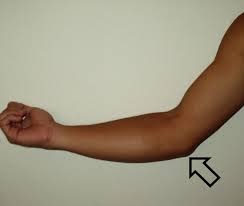 Our shoulders are truly amazing. Our arms have incredible range of motion, allowing us to create windmills, throw a ball overhand and underhand, bowl, golf, flip a pizza and carry our groceries.
Our shoulders are truly amazing. Our arms have incredible range of motion, allowing us to create windmills, throw a ball overhand and underhand, bowl, golf, flip a pizza and carry our groceries.
But the price of all that versatility is that when our shoulders hurt, our everyday functioning is seriously impaired.
What we call our shoulder is actually the area where three bones join together in a complex network of bones, tendons and muscles. The three bones are the upper arm bone (the humerus), your collar bone (clavicle) and your shoulder blade (scapula). The rounded head of the humerus fits into the socket-shape of the scapula. The entire area where they meet up is typically referred to as the rotator cuff.
Shoulder problems are not uncommon, plaguing us more as we get older and also most bothersome for people who repeat the same motions over and over, particularly work-related activity or athletic pursuits.
The most common causes of shoulder pain are:
- Arthritis
- Fractures (broken bones)
- Issues with the tendons like inflammation (bursitis or tendinitis) or tears in the tendon
When your shoulder pain impacts your functioning or causes chronic or acute pain, it’s time to see a doctor. The physician will determine the cause of the shoulder pain and then determine the best method to treat the shoulder pain.
Typical components of the diagnosis will be taking a complete medical history including discussing when the pain or immobility began and how much pain you are in. The doctor will examine you and probably order diagnostic exams including x-rays (to look at the skeletal underpinning) and/or MRI’s or ultrasounds and possibly a CT scan to detect issues in soft tissue. The doctor may also order an arthogram where dye is injected into the shoulder to better evaluate how the shoulder operates. Or the doctor may order arthoscopy, where a tiny camera looks into the shoulder joint area, allowing an incredible view and sometimes enabling a doctor to make repairs on the spot.
Depending on what actually is causing your shoulder pain, your health care team will present you with some possible courses of action to decrease your shoulder pain.
These can include:
- Medication, both over the counter and prescription
- Physical therapy to strengthen weakened muscles or modifications of certain movements
- Chiropractic adjustments can aid in shoulder pain
- Steroid injections can numb or reduce pain
- Surgery in the most severe cases
Working with your health care team, you can work to resolve and improve shoulder pain.


